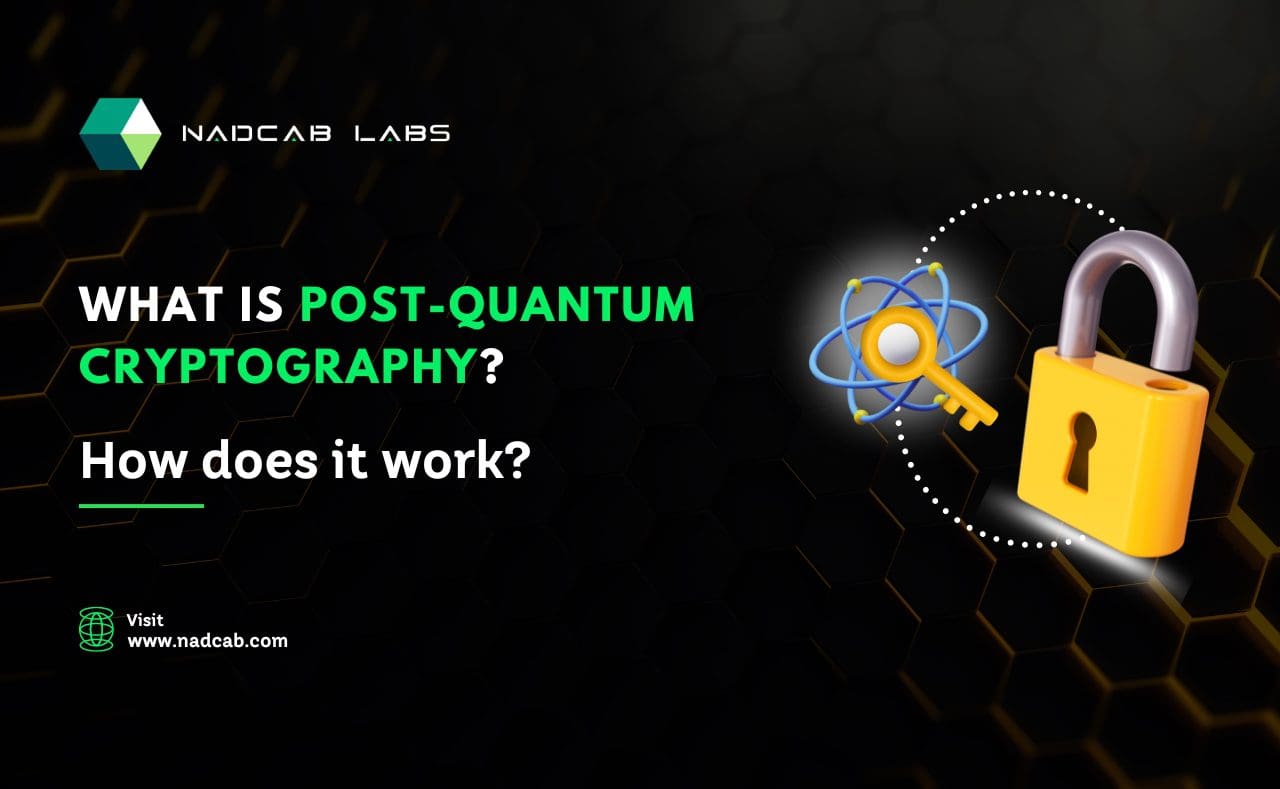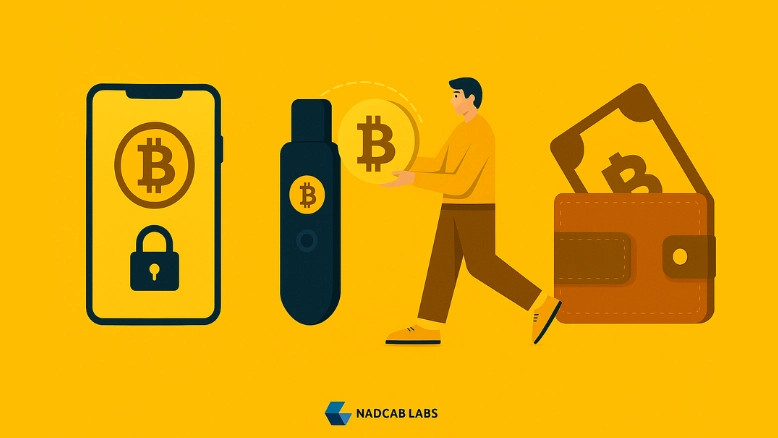
Cryptography keeps our digital world safe by ensuring our online activities, like banking, emailing, and even Crypto Exchange Development, stay private and secure. It works like a lock and key system, where we can send messages without sharing the key beforehand.
But with the arrival of Post-Quantum computers, our digital locks might not hold up anymore. These super powerful computers could easily break the locks on our private emails, making it possible for others to read them. They could also make it easier for fraudsters to steal money through online banking and even put our country’s secrets at risk.
In simple terms, quantum computing could break the security we rely on every day online, so we need to find new ways to keep our digital world safe in the future.
What is Post-Quantum Cryptography?
In the quantum computing era, Post-Quantum Cryptography (PQC) is essential for securing digital communication and data. PQC involves developing cryptographic algorithms that are secure against both quantum and classical computers, and can be easily integrated into current systems.
Research in PQC has led to the development of several promising mathematical schemes, including lattice-based, multivariate polynomial, code-based, hash-based and isogeny-based cryptography. To standardize these quantum-safe algorithms, the U.S. National Institute of Standards and Technology (NIST) started a program in 2016.
The following algorithms selected by NIST address general encryption and digital signatures that are crucial for Securing Data Exchanges and identity authentication:
Quantum Threat to Current Cryptography
Current cryptographic algorithms like RSA and ECC are based on mathematical problems that are difficult for classical computers to solve. However, quantum computers, using algorithms like Shor’s algorithm, can solve these problems much more quickly, potentially breaking the security of these cryptosystems.
Imagine your digital secrets as treasures locked away in a safe. With the increasing reliance on quantum cloud computing software, protecting these digital secrets becomes even more urgent. This safe is like the one you might have at home, protecting your valuables from intruders. Now, think of a new kind of master thief – the quantum computer. It’s not like any thief you’ve ever seen before; it’s super smart and can crack your safe in the blink of an eye, without breaking a sweat. That’s the threat hanging over our current way of keeping digital secrets safe.
The locks we use, based on complex math puzzles, are like the locks on your safe. They’re strong, but quantum computers have powers that can easily break through them. This means our private messages, online purchases, and even government secrets could all be at risk.
And it’s not just a future story. Quantum computers are getting smarter and more efficient every day. It’s like watching a storm gather on the horizon, knowing it could hit at any moment. Technologies like Elliptic Curve Cryptography , which are widely used for securing digital communications, may soon be at risk. That’s why experts are scrambling to find new ways to protect our digital secrets before it’s too late.
Why Post-Quantum Cryptography is Important?
-
Ensuring Long-Term Security
Term Security-Implementing PQC demonstrates your commitment to long-term data security and reassures customers that their data is safe.
-
Securing a Competitive Lead
Being an early adopter of PQC can set your company apart from others. This positions you as a progressive cybersecurity leader and attracts customers who put security first.
-
Preparing for Regulatory Compliance
Standards bodies like NIST are working on defining PQC standards. Early adoption can help you stay compliant with future regulations and best practices, avoiding potential legal and financial repercussions.
-
Future-Proofing Your Systems
Transitioning to PQC now ensures that your systems are protected against future threats, avoiding the need for urgent and costly upgrades later.
Implementing Post-Quantum Cryptography
Step 1- Assessing Current Systems
Evaluate your current cryptographic systems and identify which components are vulnerable to quantum attacks. Develop a roadmap for transitioning to PQC, balancing immediate needs with long-term goals.
Step 2: Educating and Training Your Team
Ensure your development team understands PQC, including how the new algorithms work and how to integrate them. Training is crucial for a smooth transition.
Step 3: Selecting Appropriate Algorithms
Choose the right PQC algorithms for your use cases. NIST’s ongoing standardization process is a valuable resource for finding vetted algorithms that meet your needs.
Step 4: Implementing and Testing New Algorithms
Carefully implement the chosen PQC algorithms and rigorously test them to ensure they meet security and performance requirements. Thorough testing is essential to identify and fix potential issues.
Step 5: Communicating with Clients
Inform your clients about the importance of PQC and the steps you’re taking to protect their data. Transparency builds trust and reassures clients that you are proactive about security.
Projecting into the future
Post-Quantum Cryptography is now a reality rather than just a theoretical idea. PQC has been used in a number of ways. OpenSSL has completely supported PQC for digital signatures and fundamental establishment procedures in its most recent version. Being the first to use PQC for main key generation, Signal Protocol, a crucial component of Signal, Google RCS, and WhatsApp communications, also revealed support for the PQXDH protocol. For Message, Apple has launched a new PQ3 encryption protocol that provides enhanced post-quantum security features.
PQC is expanding quickly in the fields of cryptography, quantum safe digital signatures, and basic exchange mechanisms. Given the growing hazards associated with quantum supremacy, its broad implementation is inevitable. Because standardized algorithms have not been tested in the real world, they may contain exploitable errors that force them to change or create entirely new algorithms.
Post-Quantum Cryptography has been an important part of cyber security plans for many years. In addition, safety regulations should require or recommend Post-Quantum Cryptography. Post-Quantum Cryptography is now an integral part of an organization’s security, protecting the integrity and confidentiality of sensitive data and preventing quantum attacks. Businesses need to start preparing for the post-quantum transition from secure lock to impenetrable vault! Service providers are essential to helping businesses succeed at all levels.
How is Nadcab Labs Incorporating Post-Quantum Cryptography into its Development Strategies?
Nadcab Labs is advancing Post-Quantum Cryptography within its development goals, including Cryptocurrency Exchange Development. They support creating cryptographic algorithms resistant to quantum attacks and actively engage in standardization efforts. Collaborating with leading organizations like NIST and ETSI, Nadcab Labs aims to help establish robust post-quantum cryptographic standards to secure future digital infrastructures against emerging quantum threats.
Nadcab Labs is preparing to integrate Post-Quantum Cryptography into their products to enhance data security for their customers. Their main goal is to be prepared well in advance of future quantum computing advancements and to strengthen data security by incorporating post-quantum cryptography into their offerings.






